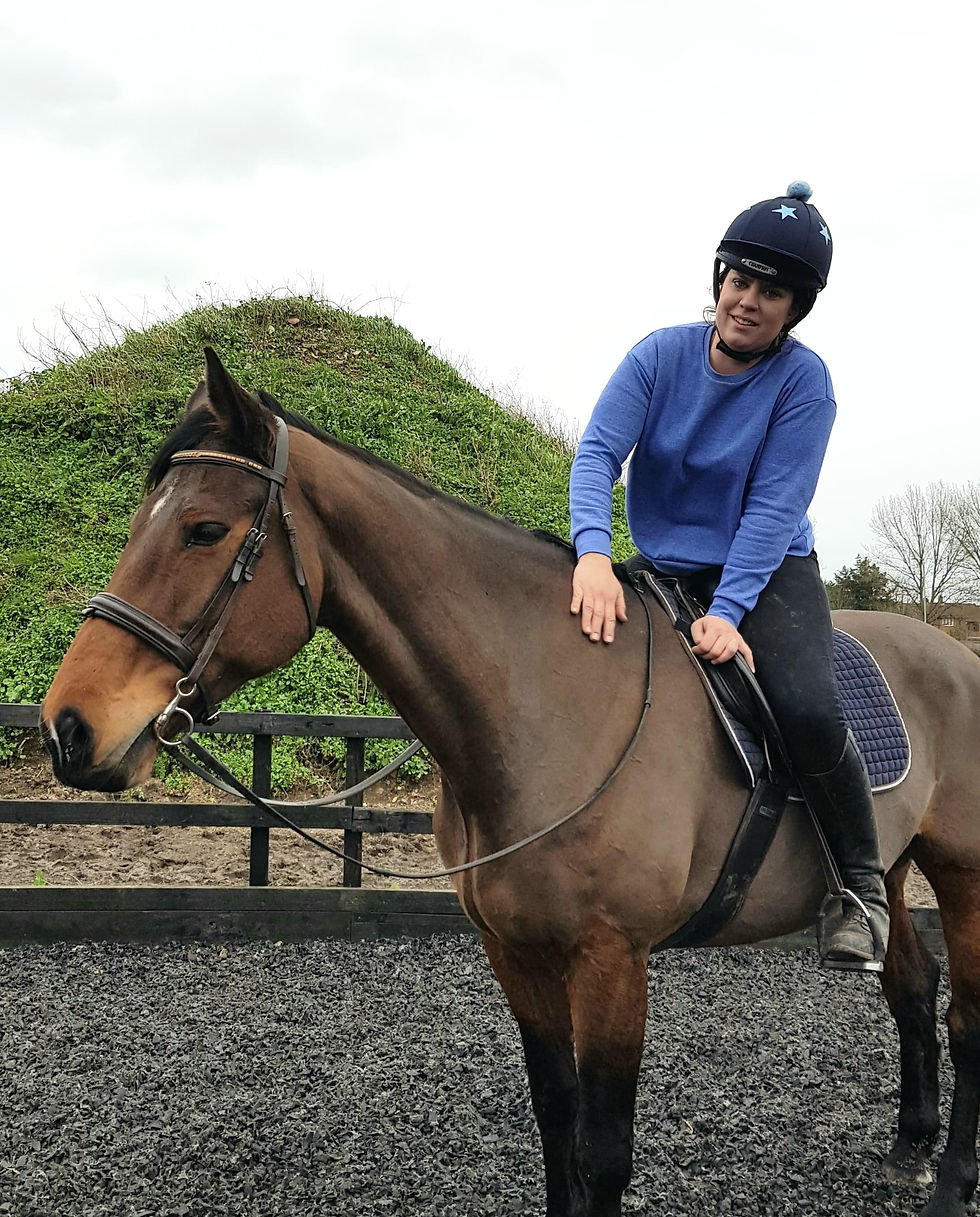What If Horsemanship Wasn’t About Control, But About Collaboration?
- Wiola Grabowska

- Feb 26
- 3 min read

For centuries, horsemanship has often been framed around control. From the way we train, ride, and handle horses to the language we use—"make the horse do this," "get the horse to listen," "teach the horse respect"—there’s an underlying assumption: We must control the horse to work together.
But what if we flipped the perspective? What if horsemanship wasn’t about control at all, but about collaboration? What if, instead of asking, "How do I make my horse do this?" we asked, "How can I help my horse understand and want to do this with me?"
Control vs. Collaboration: What’s the Difference?
Control in traditional horsemanship often relies on escalating pressure, repetition, and obedience-focused rules to ensure the horse responds in a predictable way. Collaboration, however, recognises the horse as an active participant—a thinking, feeling being with their own preferences, fears, and motivations.
The difference between control and collaboration is the difference between a boss and a leader. A boss enforces compliance, while a true leader fosters mutual understanding, creating an environment where the horse wants to engage. Good leadership isn’t about demanding obedience—it’s about inspiring confidence, offering clarity, and building a partnership where both horse and rider find success together.
Why Do We Default to Control?
It’s not surprising that control has been the default approach in training. For centuries, horses were tools for transportation, agriculture, and warfare—obedience was not optional. And even in modern sport and recreation, the pressure to achieve specific outcomes can lead us to prioritise obedience over understanding.
But neuroscience and behavioural research increasingly show that animals—especially social, intelligent ones like horses—learn best through positive association, choice, and trust-building rather than force and repetition alone.
What Does Collaboration Look Like in Practice?
If collaboration is the goal, then we need to rethink how we approach training, daily interactions, and even our mindset around horsemanship.
1. Shifting from Compliance to Communication
Instead of thinking "My horse won’t stand still," try asking, "Why does my horse feel uncomfortable standing still?" Horses are always communicating, but if we’re focused only on compliance, we miss their side of the conversation.
2. Recognising the Horse’s Perspective
A collaborative horse-human relationship starts with acknowledging the horse’s emotions, instincts, and needs. Is the horse distracted because they’re anxious? Resistant because they don’t understand? Unresponsive because they’re overwhelmed?
When we begin from their perspective, we stop seeing ‘problems’ and start seeing opportunities for better communication.
3. Replacing Pressure with Understanding
Personally I believe pressure has its place in training—it’s how horses naturally communicate with each other. But when used thoughtlessly, it becomes coercion. A collaborative approach uses pressure as a conversation, with plenty of releases, rewards, and moments where the horse feels like they are heard and have a say.

4. Inviting the Horse into the Process
What if we stopped treating training as something we do to the horse and started treating it as something we do with the horse? Small changes, like giving the horse time to process new tasks, rewarding curiosity, or allowing them to take breaks when needed, make a huge difference in their willingness to engage.
Does Collaboration Mean Letting the Horse Do Whatever It Wants?
Not at all. In my view, collaboration isn’t about giving up leadership—it’s about redefining leadership. True leadership is about guiding, not dominating. A good leader is someone their horse wants to follow because they feel safe, heard, and understood.
The Benefits of a Collaborative Approach

I found that when we prioritise collaboration over control, something remarkable happens:
Horses become more willing. They start offering responses rather than waiting to be forced.
Training becomes more effective. When a horse understands why something is asked of them, they retain it better.
The relationship deepens. The horse stops seeing training as something done to them and starts seeing it as something done together.
What’s Next?
If you’ve never approached horsemanship from a collaboration-first mindset, start small:

Observe your horse without an agenda. What do they naturally gravitate towards? What makes them tense?
Before correcting a behaviour, ask why it’s happening. Work on the cause, not the symptom.
Experiment with rewarding curiosity and choice rather than just responding to mistakes.
Ultimately, a collaborative approach to horsemanship isn’t just about better training. It’s about reshaping the way we interact with our horses—so that they aren’t just obedient, but engaged, willing, and truly with us.
Because real horsemanship isn’t about making horses do what we want. It’s about making them want to do it with us.
What are your thoughts? Have you experienced a shift from control to collaboration in your own horsemanship journey? If not, is it something you'd like to explore?





Comments